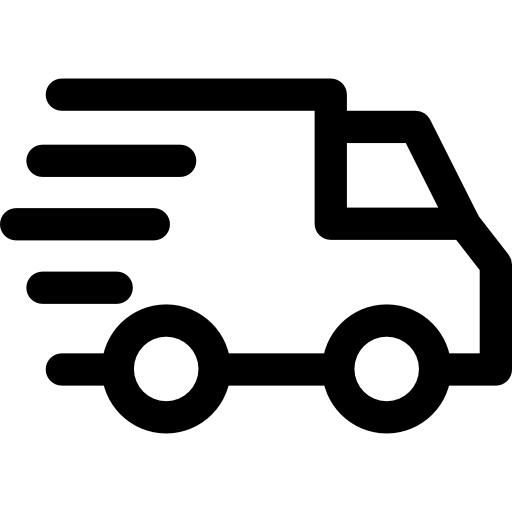Table of Contents
- 1.Sound Creation: Synthesizers vs Keyboards
- 1.1. How Synthesizers Create Sound
- 1.2. How Keyboards Produce Sound
- 1.3. Flexibility in Sound Design
- 1.4. Introducing DONNER MEDO: The Best of Both Worlds
- 2.Functionality: What Each Instrument Offers
- 2.1. Synthesizer Functionality
- 2.2. Keyboard Functionality
- 2.3. Versatility in Music Production
- 2.4. DONNER MEDO: A Versatile Tool
- 3.Typical Use Cases: When to Use a Synthesizer vs a Keyboard
- 3.1. Synthesizers in Electronic Music
- 3.2. Keyboards in Live Performances
- 3.3. Using Synthesizers for Sound Design
- 3.4. DONNER MEDO: Adaptable to Any Scenario
- 4.Learning Curve: Which Is Easier to Master?
- 4.1. Learning to Use a Synthesizer
- 4.2. Learning to Play a Keyboard
- 4.3. Combining Synthesizers and Keyboards
- 4.4. DONNER MEDO: Easy to Learn, Fun to Play
- 5.Cost Comparison: What to Consider
- 5.1. Cost of Synthesizers
- 5.2. Cost of Keyboards
- 5.3. Value for Money
- 5.4. DONNER MEDO: Affordable and Feature-Rich
- 6.Final Thoughts: Which Instrument is Right for You?
When it comes to electronic instruments, the debate between synthesizers and keyboards is a common one. Both instruments are staples in modern music production, but they serve different purposes and cater to different needs. Whether you’re a beginner deciding which instrument to start with or an experienced musician looking to expand your setup, understanding the differences between synthesizers and keyboards is crucial. In this blog, we’ll compare these two instruments, highlighting their unique features, and introduce you to the DONNER MEDO—a versatile device that bridges the gap between them.
---
1.Sound Creation: Synthesizers vs Keyboards
The most significant difference between synthesizers and keyboards lies in their approach to sound creation. Understanding this distinction is key to choosing the right instrument for your musical goals.
1.1. How Synthesizers Create Sound
Synthesizers are designed to generate and manipulate sound from scratch. They use various sound waves, oscillators, filters, and envelopes to create a wide range of tones, from traditional instrument emulations to entirely new sounds. This makes synthesizers ideal for musicians who want to explore and create unique sonic textures.
1.2. How Keyboards Produce Sound
Keyboards, on the other hand, typically come pre-loaded with a variety of preset sounds. These sounds are often sampled from real instruments, such as pianos, strings, or drums. While some advanced keyboards offer sound-shaping capabilities, they don’t provide the same level of control over sound creation as synthesizers do.
1.3. Flexibility in Sound Design
Synthesizers are known for their flexibility. With a synthesizer, you can tweak every aspect of a sound, from its waveform to its modulation. Keyboards, although versatile, are more limited in this regard, as they rely on preset sounds that can only be modified to a certain extent.
1.4. Introducing DONNER MEDO: The Best of Both Worlds
The DONNER MEDO is a unique device that combines the flexibility of a synthesizer with the simplicity of a keyboard. It allows users to create and manipulate sounds with ease, without needing any external applications. This makes it a perfect choice for beginners and advanced users alike, offering the best of both worlds.
2.Functionality: What Each Instrument Offers
When it comes to functionality, synthesizers and keyboards offer different features that cater to various musical needs. Let’s explore what each instrument brings to the table.
2.1. Synthesizer Functionality
Synthesizers are all about creating and shaping sound. They often come with multiple oscillators, filters, and modulation options, allowing for deep sound design. Some synthesizers also feature built-in sequencers and arpeggiators, making them powerful tools for music production.
2.2. Keyboard Functionality
Keyboards, particularly digital pianos, are designed to mimic the feel and sound of acoustic pianos. They often include features like touch-sensitive keys, built-in rhythms, and accompaniment styles, which are great for live performances or songwriting.
2.3. Versatility in Music Production
While synthesizers are typically used for creating electronic music, their versatility makes them suitable for a wide range of genres. Keyboards, with their preset sounds and performance features, are often used in live settings or for quick compositions.
2.4. DONNER MEDO: A Versatile Tool
The DONNER MEDO stands out for its versatility. It’s not just a synthesizer; it’s a complete music-making tool. With features like a looper, RGB lighting, and built-in drums, chords, and bass functions, it caters to musicians looking for an all-in-one solution. Plus, its portability makes it perfect for on-the-go music creation.
3.Typical Use Cases: When to Use a Synthesizer vs a Keyboard
Knowing when to use a synthesizer versus a keyboard depends on your musical needs and goals. Here’s a breakdown of typical use cases for each instrument.
3.1. Synthesizers in Electronic Music
Synthesizers are the backbone of electronic music genres like EDM, techno, and ambient. Their ability to create and manipulate sounds makes them indispensable for producers looking to craft unique tracks.
3.2. Keyboards in Live Performances
Keyboards are a go-to for live performances, especially in genres like pop, rock, and jazz. Their preset sounds and performance-oriented features make them easy to use on stage, allowing musicians to focus on their playing rather than tweaking settings.
3.3. Using Synthesizers for Sound Design
For sound designers, synthesizers are essential. Whether you’re creating sound effects for films, video games, or installations, synthesizers provide the tools needed to craft original and evocative sounds.
3.4. DONNER MEDO: Adaptable to Any Scenario
The DONNER MEDO is adaptable to various use cases. Its combination of synthesizer and keyboard features, along with its portability and ease of use, makes it suitable for both studio production and live performances. Whether you’re creating electronic music, performing on stage, or designing sounds, the DONNER MEDO has you covered.
4.Learning Curve: Which Is Easier to Master?
The learning curve for synthesizers and keyboards can vary depending on your background and musical experience. Here’s what to expect when learning each instrument.
4.1. Learning to Use a Synthesizer
Synthesizers can be challenging for beginners due to their complexity. Understanding oscillators, filters, and modulation requires time and practice. However, once you grasp these concepts, the creative possibilities are endless.
4.2. Learning to Play a Keyboard
Keyboards are generally easier for beginners, especially those with some piano experience. The layout is familiar, and the preset sounds make it simple to start playing music right away.
4.3. Combining Synthesizers and Keyboards
For those looking to expand their skills, combining a synthesizer with a keyboard can be a rewarding experience. You can use the keyboard to control the synthesizer, blending the best of both worlds.
4.4. DONNER MEDO: Easy to Learn, Fun to Play
The DONNER MEDO is designed with beginners in mind. Its intuitive interface and user-friendly controls make it easy to start creating music right away. Whether you’re new to synthesizers or keyboards, the DONNER MEDO offers a smooth learning curve and plenty of room for growth.
5.Cost Comparison: What to Consider
Price is always a factor when choosing between a synthesizer and a keyboard. Here’s a look at the cost considerations for each.
5.1. Cost of Synthesizers
Synthesizers can range from affordable entry-level models to high-end machines with extensive features. The price depends on the type, brand, and capabilities of the synthesizer.
5.2. Cost of Keyboards
Keyboards also vary in price, with digital pianos and stage keyboards being on the higher end. However, there are many affordable options for beginners.
5.3. Value for Money
When considering cost, it’s important to think about what you’re getting for your money. Synthesizers offer more in terms of sound design capabilities, while keyboards often provide a more straightforward playing experience.
5.4. DONNER MEDO: Affordable and Feature-Rich
The DONNER MEDO offers incredible value for money. It combines the features of both synthesizers and keyboards at a price point that is accessible to beginners and experienced musicians alike. With the DONNER MEDO, you’re getting a versatile, portable, and powerful music-making tool without breaking the bank.
6.Final Thoughts: Which Instrument is Right for You?
Choosing between a synthesizer and a keyboard ultimately depends on your musical goals and preferences. Here’s a final comparison to help you decide.
6.1. For Sound Designers and Electronic Musicians
If you’re interested in sound design and electronic music production, a synthesizer is the way to go. It offers the flexibility and control needed to create unique sounds and textures.
6.2. For Performers and Composers
If you’re a performer or composer who needs a reliable instrument for live shows or songwriting, a keyboard might be the better choice. Its preset sounds and performance features make it easy to use in various musical settings.
6.3. Combining Both Instruments
Many musicians find that having both a synthesizer and a keyboard in their setup provides the best of both worlds. This combination allows for maximum creativity and versatility in music production.
6.4. DONNER MEDO: The Perfect All-in-One Solution
If you’re still undecided, the DONNER MEDO could be the perfect solution. It offers the sound design capabilities of a synthesizer and the performance features of a keyboard in one compact, easy-to-use device. Whether you’re a beginner or an experienced musician, the DONNER MEDO is designed to meet your needs and inspire your creativity.













































